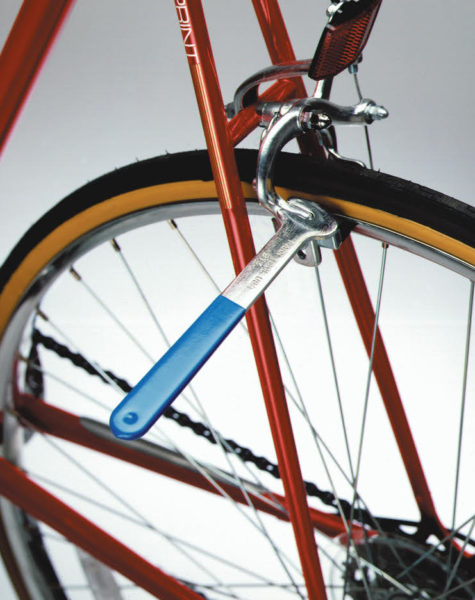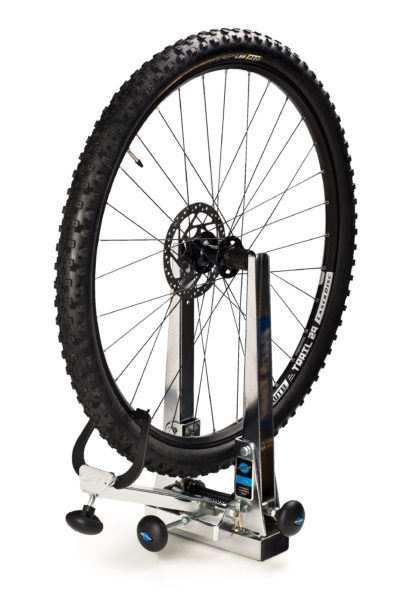We know, there’s no such thing as a stupid question. But there are definitely some questions too embarrassing to ask your local shop or riding buddies. This is our weekly installment where we get to the bottom of your questions – serious or otherwise. And this week, Park Tool is answering your questions about their brand, products and related inquiries.
It’s week two of our Ask a Stupid Question series presented by Park tool, and the famous blue tool company is back to answer your burning questions. This week, the answers revolve around when and where to use certain assembly compounds, grease, etc., whether or not certain tools will ever make it back into the line up, and how to keep your truing stand in tip top shape…

#1: Can you help explain when/where/why to use grease, anti-seize, assembly compound, thread locker, etc.? What are the differences, when are they interchangeable, and does the average home mechanic need all of them?
Park Tool: This is a great question but it’s a bit of a long answer so strap in! Each of these compounds performs a slightly different function and it’s good to know when to use what. Here’s the basic gist of what each one does and when to use it:
- Grease – This one is pretty straightforward; when you have two surfaces moving over each other, you need lubrication to keep them from wearing out. Examples of the systems that require grease are things like bearings, fork stanchions, and tank treads. That last one isn’t bicycle specific but it still counts. As a home mechanic, some type of grease is probably going to be your go-to substance for all things bicycle related. Get a nice one that stays put and is water and temperature resistant like our HPG-1. You’ll use it a lot as a home mechanic so treat yourself.
- Anti-Seize – Anti-seize is best used with particularly reactive metals like aluminum or titanium. Anti-seize uses a non-reactive base metal (usually copper) suspended in a grease-like substance. The presence of the non-reactive base metal prevents the reactive ones from contacting and seizing together. It’s not exactly a lubricant, and it doesn’t have a ton of uses for bicycles, but if you’re using an aluminum seatpost in a steel frame, or a titanium frame and aluminum bottom bracket cups, this is the stuff you want to use. It’s also not bad for alloy chainring bolts as those often tend to seize together as well. Grease can also take the place of anti-seize in these situations, but it’s best to use anti-seize when you have two dissimilar, reactive metals.
- Thread locker – When you don’t want a bolt to move, that’s when you use thread locker. Thread locker is a compound that hardens when there is a lack of oxygen present and will keep bolts in place, and will also fill voids to keep things like rust and dirt out of your threads, so the bolt will stay tight without seizing in place. Cleat bolts, fixing bolts for saddle clamps, water bottle cage bolts, disc caliper mounting bolts, anything subject to vibration are all good candidates for thread lockers. Remember though, there are different strengths so choose the one that is appropriate for your application or you’ll be very bummed out later when it’s time to replace that particular component. With bicycle applications, you generally don’t need anything more than low to medium-strength thread locker as the strength designation is usually dependent on the size of the fitting and bikes don’t use many large or high torque fittings in the grand scheme of things. I’ll also throw in our RC-1 retaining compound with this category as well. These compounds are good for filling gaps in non-threaded press fits. The most common application for this would be with silencing a creaky press-fit bottom bracket. Always use a primer first with carbon fiber.
- Assembly Compound – Assembly Compound is used for parts made of carbon fiber. It provides increased friction which allows for decreased torque. This is good because carbon fiber doesn’t like to be clamped too tightly but usually, has a slippery gloss finish. Use assembly compound anywhere you have a carbon fiber part interface, but keep it off your steerer tube because it is basically an abrasive, which can increase wear on that particular part. It’s good to keep plenty on hand as a home mechanic if you’re using carbon fiber parts.
Any plans to bring back the BT-3? I can’t even find a used one…
Park Tool: We’ll bring back the BT-3 as soon as the bike industry brings back the single-pivot brake caliper. That is an old tool and as I’m writing this, there is one on Ebay! It’s useful when you need it, but the bike industry continues to evolve and so must our product line up. Keep your eyes peeled and hopefully you can find one out in the wild.
I have an older Park TS-2 wheel truing stand (it looks like a TS-2.2 but it’s early 1990’s vintage). I’ve never been able to perfectly center the rim guides so all my wheels start life dished and I have to adjust them to center with a dishing tool. I’ve tried using your steps but nothing seems to work. Help!
Park Tool: It’s good to remember that the only way to know a wheel is perfectly dished is to use a dishing tool. It’s also important to be consistent in how you install your wheels in the stand. It is not necessary to “clamp” the wheel between the uprights with tension. Because the uprights are long there can be some inconsistent deflection when under duress. The best way to get a repeatable result is to put only enough “squeezing tension” on the uprights to hold the wheel. We tell people to bring in the uprights to only touch the hub…no more. That being said, it’s good to go through the centering process every now and again so your TS-2 or TS-2.2 is getting you as close to centered as possible. We have instructions on how to do so at our website here. If that isn’t working, give us a call and we can walk you through the finer points of TS-2 centering and get you all straightened out.
Missed week one? Check out how Park Tool turned blue, and other great questions here. Got a question of your own? Click here to use the AASQ form, or find the link under the Contact menu header up top anytime a question pops into your mind! And keep the questions for Park Tool coming, they’re answering for the next few weeks!


